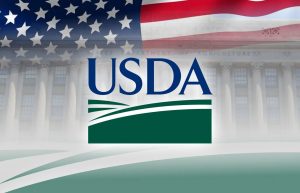
The pandemic uncovered an unexpected flaw in the mover, and National Milk’s board of directors voted Friday to request a hearing.
The mover sets the Class I base price to which a location differential is added. The calculation for the mover was changed in 2019 to provide better risk management for fluid milk processors. But that change proved costly to dairy farmers in the pandemic’s wildly abnormal markets.
The previous mover was calculated as the “higher of” the advance Class III and Class IV prices. It was changed to the average of Class III and Class IV plus 74 cents per hundredweight, which reflected the average difference of the Class III and Class IV prices and the higher of the two.
The change was meant to be revenue-neutral, with equity among market participants a stated goal. It functioned as such until July 2020. Fueled by government purchases for food boxes, cheese and Class III milk prices soared.
The significant gap between Class III and Class IV prices resulted in an average price lower than what the previous “higher of” calculation would have been.
Thus the Class I mover was lower than what it would have been under the previous mover, and dairy farmers lost money on Class I milk. Revenue from that milk is shared in federal order pools.
National Milk estimates dairy farmers lost more than $725 million compared with the previous mover.
Its proposal would help recoup the lost revenue and ensure that neither farmers nor processors are disproportionately harmed by future significant price disruptions.
The proposal would modify the current Class I mover by adjusting the 74 cent amount added to the average of the Class III and Class IV price every two years based on conditions over the previous 24 months, with the current mover remaining the floor.
“As the COVID-19 experience has shown, market stresses can shift the mover in ways that affect dairy farmers much more than processors. This was not the intent of the Class I mover formula negotiated within the industry,” Randy Mooney, a dairy farmer and chairman of National Milk’s board of directors, said in a press release.
“Dairy farmers were pleased with the previous method of determining Class I prices and had no need to change it, but we tried to accommodate the concerns of fluid processors for better risk management,” he said.
“Unfortunately, the severe imbalances we’ve seen in the past year plainly show that a modified approach is necessary. We will urge USDA to adopt our plan to restore equity and create more orderly marketing conditions,” he said.
National Milk’s request will be to limit the hearing specifically to proposed changes to the mover, after which USDA would have 30 days to issue an action plan that would determine whether USDA would act on an emergency basis.

























